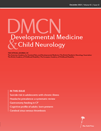Cerebral sinus venous thrombosis in children: an urgent need for multicentre trials
This commentary is on the article by Grunt et al. on pages 11451150 of this issue.
Grunt et al.1 contribute useful information on childhood cerebral sinovenous thrombosis (CSVT), a condition that occurs probably more frequently than we think. CSVT is increasingly reported in children but the diagnosis of CSVT is still difficult. It is often not suspected clinically owing to non-specific presenting features. Radiological diagnosis is not easy, as routine computed tomography and magnetic resonance imaging of the brain can miss clots in the intracranial venous system, particularly in neonates and in the early stages of the disease. Accurate diagnosis, therefore, demands dedicated intracranial venous imaging techniques such as computed tomography venography (CTV) and magnetic resonance venography (MRV), each having its own advantages and disadvantages. In neonates and sometimes in infants, physiological factors such as skull bone molding, slow venous flow, and high hematocrit result in over- and underestimation of CSVT in the routine time-of-flight MRV. Advanced venous imaging techniques like multislice CTV, contrast-enhanced MRV, phase contrast MRV, and susceptibility weighted-imaging are employed in adults but have not been validated in children. At our centre, multislice CTV, which is easier to obtain in sick patients owing to short study time and lack of need for sedation, has sometimes demonstrated intraluminal venous clots better than MRV (unpublished material), although radiation exposure is a concern. Cranial ultrasound is routinely used in neonates, but has yet to be systematically studied in CSVT. Overall, imaging research in pediatric CSVT is an important but overlooked area that merits careful study, as the establishment of uniform and consistently reproducible imaging techniques are vital for definitive diagnosis.
Children with CSVT are being increasingly treated with anticoagulant therapy based on adult practice due to the absence of pediatric clinical trials. Treatment in neonates is controversial and consensus-based guidelines give divergent views.2,3 The geographic location seems to determine which neonate with CSVT will receive anticoagulant therapy.4 The main reasons why most neonates are not given anticoagulation therapy are lack of safety data, high frequency of intracranial hemorrhage at diagnosis, and lack of efficacy data. However, a recently published study from our centre has documented the safety of anticoagulant therapy in children, including neonates5 with only a 6% major hemorrhagic complication rate that is comparable to the rate for systemic venous thrombosis (∼5%).6 Although the presence of intracranial hemorrhage in CSVT often precludes the use of anticoagulant therapy in children, most adults with intracranial hemorrhage receive anticoagulant therapy7 as intracranial hemorrhage is considered to be an expected consequence of the natural pathophysiology of CSVT and therefore not an absolute contraindication to treatment. This might also apply to children and neonates,8 but more data are needed. Our study documented a high rate of CSVT propagation (thrombus progression) in untreated (35%) compared with treated patients (5%) and faster thrombus recanalization rates in neonates compared with older children. CSVT propagation was associated with increased risk of parenchymal injury at all ages and worse outcome in older children. All neonates had silent propagation which leads our group to believe that untreated pediatric patients should be closely monitored clinically and radiologically for thrombus propagation. Our study was inadequately powered and limited by selection bias to assess treatment effect on clinical outcome. The study by Grunt et al. reports a positive influence of anticoagulant therapy on the outcome of CSVT. Though encouraging, this needs to be interpreted with caution owing to limitations such as small sample size (hence the large confidence interval), lack of uniform anticoagulant therapy protocols, and variability in imaging modalities across centres which have been acknowledged by the authors.
A prospective multicentre, multinational clinical trial of anticoagulant therapy for neonatal CSVT appears imminent as the outcome is poor in neonates compared with older children, which is a consistent observation across most studies including the Grunt et al. study. We now have the safety and outcome data to potentially consider this trial. However, the main challenges for this endeavour include a large sample size compounded by the relative rarity of the condition and the choice of the optimal imaging modality for diagnosis. The International Pediatric Stroke Study Group, a growing consortium led by several experts in the field of pediatric stroke, appears well-placed to spearhead this trial.




